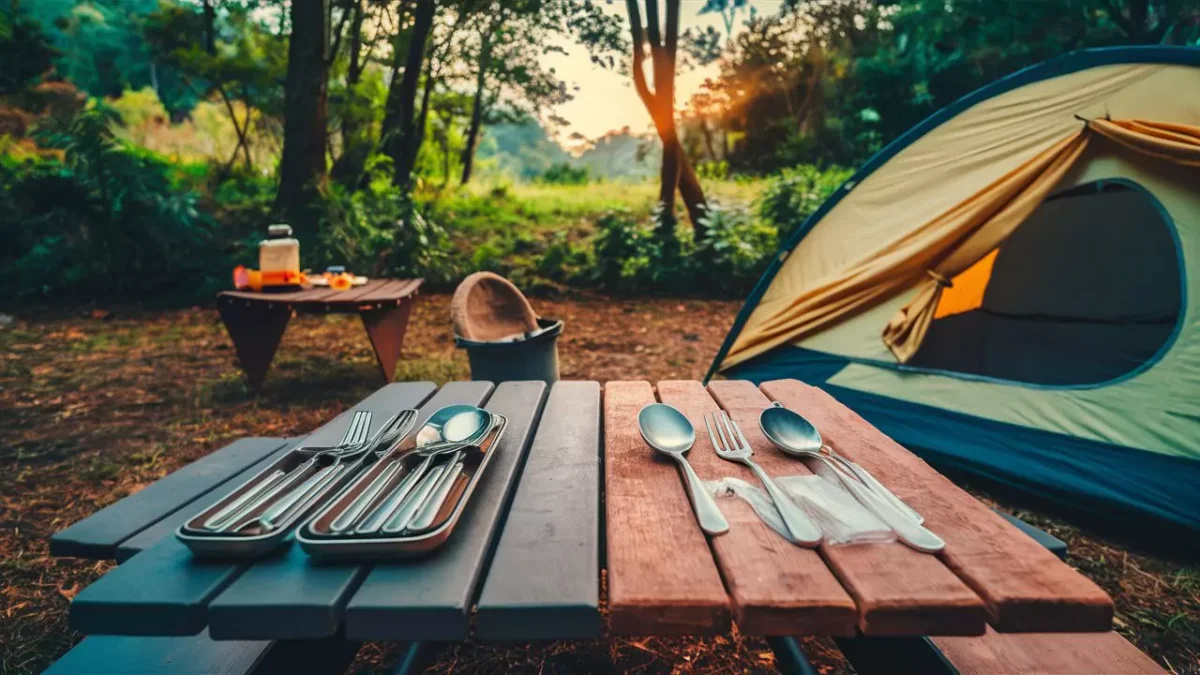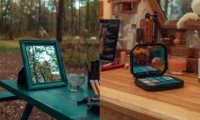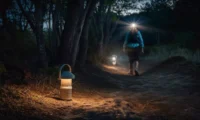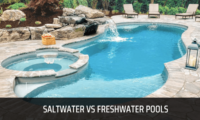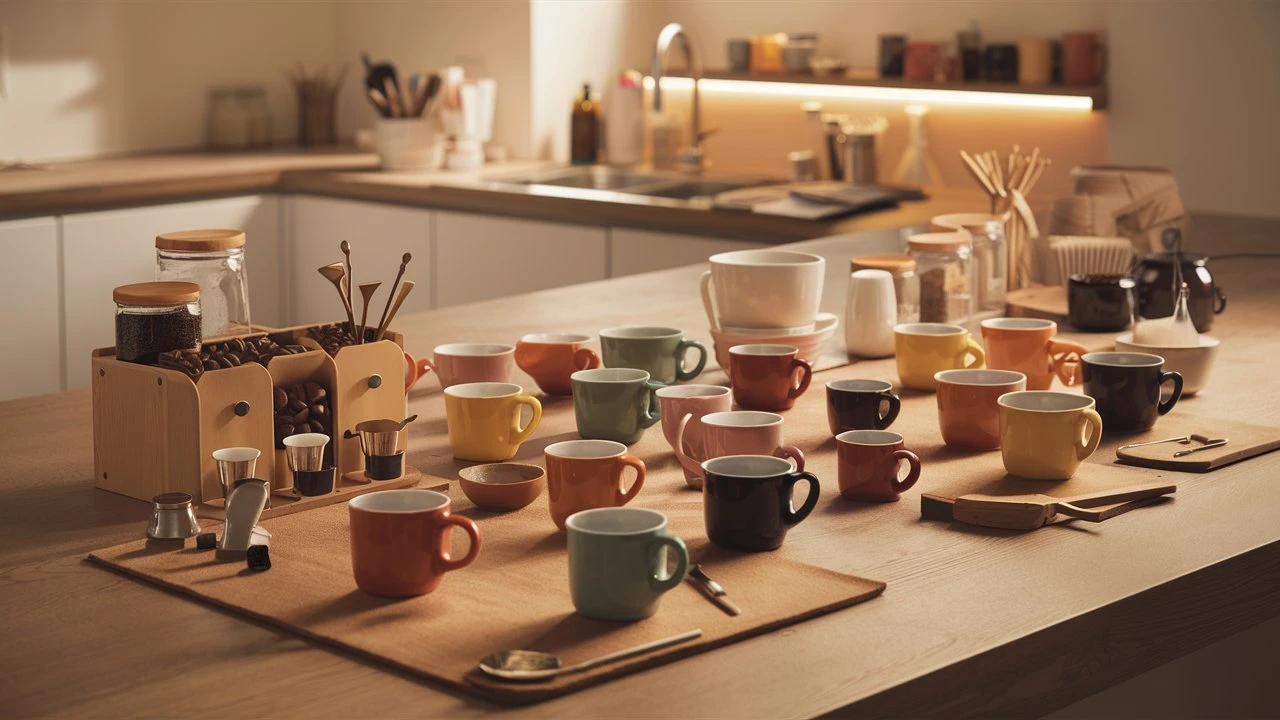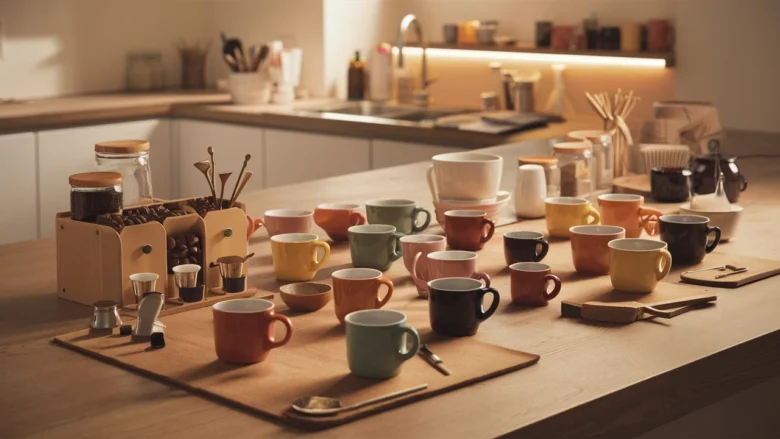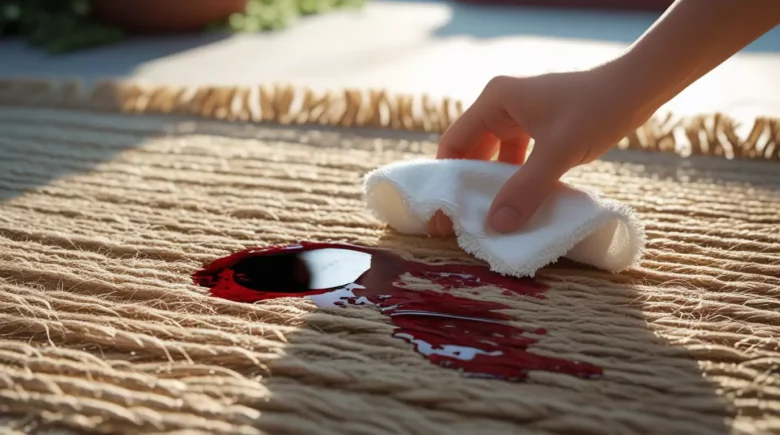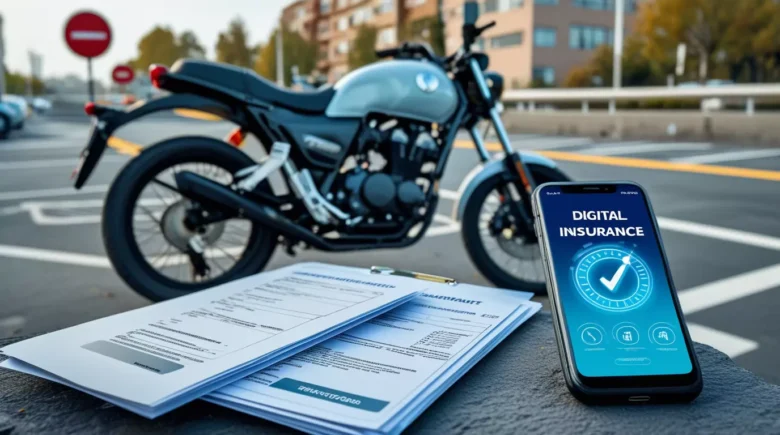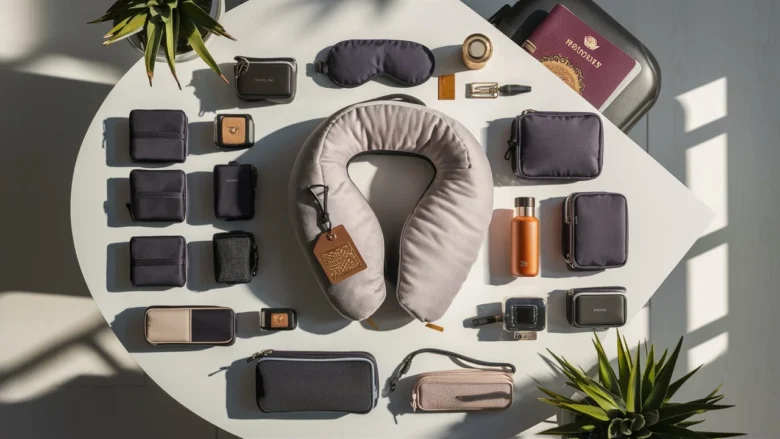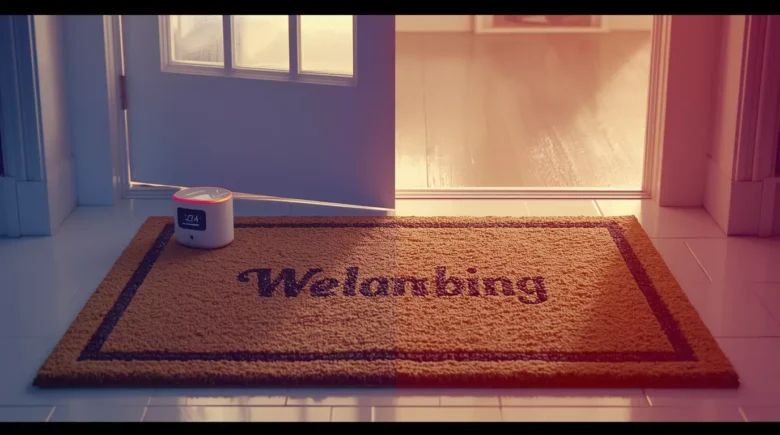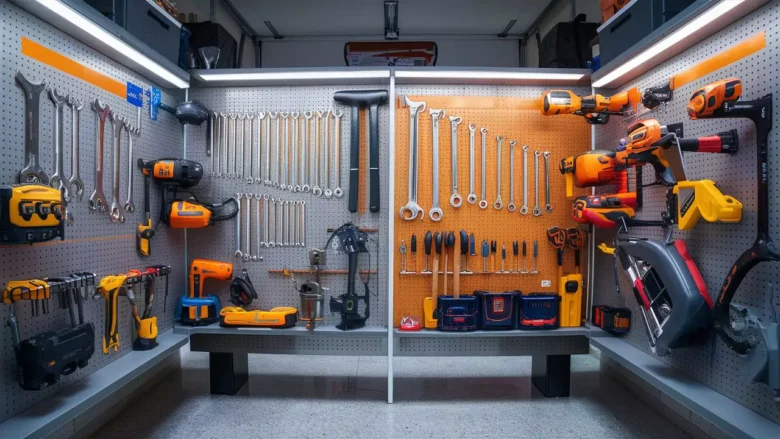You’re standing in the camping aisle, staring at a $30 titanium spork wondering if you’ve lost your mind.
- The Real Question Everyone’s Asking
- Outdoor Dining Reusable vs Convenience: My 0 Mistake
- 💖 You Might Also Like
- The Truth About Portable Camping Utensils
- Weight Actually Matters
- The Money Math
- Types of Portable Camping Utensils That Actually Work
- The Spork Revolution
- Full Utensil Sets
- When Disposable Utensils Actually Make Sense
- Car Camping with Large Groups
- Kids’ Camping Trips
- Emergency Backup
- ✨ More Stories for You
- Environmental Impact: The Uncomfortable Truth
- Convenience Factor: What Nobody Admits
- My Current Setup (After 3 Years of Testing)
- 🌟 Don't Miss These Posts
- Cleaning and Maintenance: The Real Deal
- Storage and Organization
- Common Mistakes People Make
- Buying Too Much
- Forgetting About Weight
- No Backup Plan
- Not Testing at Home
- Budget Breakdown: Every Price Point
- Making the Decision: A Simple Framework
- FAQ
- What’s the best material for camping utensils?
- How do I prevent losing my camping utensils?
- Are bamboo utensils good for camping?
- Can I bring camping utensils on airplanes?
- How do I clean camping utensils without soap?
- What’s the difference between a spork and separate utensils?
- Do I need a camping knife?
- How many utensils should I pack?
- What about kids’ camping utensils?
- Are collapsible utensils worth it?
- The Bottom Line
Meanwhile, there’s a pack of 100 plastic forks for $3 right next to it.
Portable camping utensils vs disposable utensils eating – this debate has been going on forever, and I’m about to settle it once and for all.
The Real Question Everyone’s Asking
Here’s what’s actually running through your head:
- Am I being stupid spending money on camping utensils when plastic ones work fine?
- Will I actually remember to pack these things?
- What if I lose them in the woods?
- Are disposable utensils really that bad for the environment?
- Which option saves me more money long-term?
I’ve been there.
Standing in REI with a $45 camping utensil set in my hand, thinking my wallet was about to hate me.
Outdoor Dining Reusable vs Convenience: My $200 Mistake
Three years ago, I bought every piece of camping gear the salesperson recommended.
Including a fancy titanium utensil set.
Know what happened?
I forgot to pack it on my first three trips.
Ended up buying plastic utensils at gas stations anyway.
That’s when I realized most people approach this whole thing backwards.
💖 You Might Also Like
The Truth About Portable Camping Utensils
Weight Actually Matters
Here’s something nobody talks about:
A decent camping spork weighs about 0.5 ounces.
A plastic fork weighs 0.2 ounces.
Doesn’t sound like much, right?
Wrong.
When you’re carrying everything on your back for 10 miles, every ounce counts.
But here’s the kicker – you need multiple disposable utensils per trip.
So that 0.2 ounces becomes 1.6 ounces for an 8-meal backpacking trip.
Suddenly that titanium spork looks pretty smart.
The Money Math
Let me break this down:
Disposable Route:
- $3 for 100 plastic forks
- Average camping trip uses 6-8 utensils
- That’s about $0.24 per trip
- 20 camping trips per year = $4.80 annually
Reusable Route:
- $15-45 for a decent camping utensil set
- Lasts 5+ years with proper care
- Cost per year = $3-9
Wait, that doesn’t look right.
Disposables seem cheaper, right?
Here’s what they don’t tell you:
You don’t just buy utensils once.
You forget them. You run out. You buy emergency packs at marked-up prices.
I tracked my actual spending for two years.
Disposable utensils cost me $47.
My camping utensil set cost $25.
Types of Portable Camping Utensils That Actually Work
The Spork Revolution
Titanium Sporks
- Weight: 0.5 oz
- Price: $15-25
- Pros: Lightweight, durable, won’t break
- Cons: Expensive, can get hot with food
Plastic Sporks
- Weight: 0.3 oz
- Price: $3-8
- Pros: Cheap, lightweight
- Cons: Break easily, not great for hot food
Stainless Steel Sporks
- Weight: 1.2 oz
- Price: $8-15
- Pros: Durable, good with hot food
- Cons: Heavier, conducts heat
Full Utensil Sets
Collapsible Sets
- Weight: 2-4 oz
- Price: $20-40
- Pros: Fork, knife, spoon separate
- Cons: More pieces to lose
Nested Sets
- Weight: 3-5 oz
- Price: $25-50
- Pros: Everything fits together
- Cons: Can be bulky
When Disposable Utensils Actually Make Sense
I’m not anti-disposable.
Here’s when they’re the right choice:
Car Camping with Large Groups
Last summer, I took 12 people car camping.
Buying enough reusable utensils for everyone?
$300+.
Pack of disposable utensils?
$15.
Easy math.
Kids’ Camping Trips
Children lose things.
It’s what they do.
I learned this the hard way when my nephew dropped my $30 titanium spork in a river.
For family trips with kids under 10, disposables save your sanity.
Emergency Backup
Even with reusable utensils, I pack 2-3 disposable forks.
Why?
Because stuff happens.
You drop your spork in the fire. Someone forgets to pack theirs. You need extras for unexpected guests.
✨ More Stories for You
Environmental Impact: The Uncomfortable Truth
Here’s where people get weird about this topic.
The disposable guilt is real.
But let me give you the actual numbers:
One plastic fork creates about 3 grams of CO2 to manufacture.
A titanium spork creates about 150 grams of CO2 to manufacture.
That means you need to use your titanium spork 50+ times to break even environmentally.
Most people do.
If you camp more than 10 times per year, reusable wins.
If you camp 2-3 times per year, disposables aren’t the end of the world.
Convenience Factor: What Nobody Admits
Disposable utensils are more convenient.
There, I said it.
No washing. No drying. No packing wet utensils. No remembering to bring them.
But convenience has a price.
You run out at the worst times. They break when you need them most. You feel guilty every time you throw one away. You spend more money than you think.
My Current Setup (After 3 Years of Testing)
Here’s what actually works:
Primary: Titanium spork ($20)
- Covers 90% of my eating needs
- Weighs nothing
- Never breaks
Backup: 3 disposable forks
- For emergencies
- For messy foods where I don’t want to clean
- For sharing with unprepared friends
Car camping addition: Cheap plastic utensil set ($8)
- Stays in my car kit permanently
- Good for large groups
- Don’t care if I lose it
🌟 Don't Miss These Posts
Cleaning and Maintenance: The Real Deal
People overthink this.
For basic cleaning:
- Rinse with camp water
- Wipe with bandana
- Done
For deep cleaning:
- Use camp soap
- Scrub with small brush
- Rinse thoroughly
- Air dry
Pro tip: Pack a small microfiber cloth specifically for utensils.
Weighs 0.2 ounces. Dries everything perfectly. Doubles as a pot scrubber.
Storage and Organization
This is where most people mess up.
They buy great utensils, then lose them immediately.
What works:
Mesh bag approach:
- Small mesh stuff sack
- All utensils go in one place
- Easy to find, hard to lose
Integrated storage:
- Many camping cooksets have utensil holders
- Keeps everything together
- One less thing to remember
Backup location:
- Always keep one spare utensil in your first aid kit
- You’ll thank me later
Common Mistakes People Make
Buying Too Much
You don’t need a 12-piece camping utensil set.
A spork handles 95% of camping food.
Save the money.
Forgetting About Weight
That stainless steel set looks nice.
It also weighs 8 ounces.
For backpacking, every ounce matters.
No Backup Plan
Even the best camping utensils break or get lost.
Always have a backup.
Not Testing at Home
Buy your utensils and use them for a week at home first.
You’ll discover issues before you’re miles from civilization.
Budget Breakdown: Every Price Point
Ultra-budget ($5-10):
- Plastic spork set
- Works fine for car camping
- Replace yearly
Mid-range ($15-25):
- Single titanium or steel spork
- Best value for most people
- Lasts years
High-end ($30-50):
- Full titanium utensil set
- For serious backpackers
- Lifetime investment
Premium ($50+):
- Custom or specialty materials
- Only if you camp 50+ days per year
- Mostly bragging rights
Making the Decision: A Simple Framework
Ask yourself three questions:
- How often do I camp?
- 1-5 times per year: Disposable is fine
- 6-15 times per year: Mix of both
- 16+ times per year: Definitely reusable
- What type of camping?
- Car camping: Either works
- Backpacking: Reusable wins
- Group camping: Disposable easier
- What’s my budget?
- Tight budget: Start with plastic spork
- Moderate budget: Titanium spork
- High budget: Full utensil set
FAQ
What’s the best material for camping utensils?
Titanium for backpacking (lightweight), stainless steel for car camping (durable and affordable), plastic for budget-conscious campers.
How do I prevent losing my camping utensils?
Use a dedicated mesh bag, bright colors, and always pack them in the same place. Keep one backup utensil in your first aid kit.
Are bamboo utensils good for camping?
They’re eco-friendly but can break easily and absorb odors. Better for short trips than extended backcountry use.
Can I bring camping utensils on airplanes?
Yes, in checked luggage. TSA allows camping utensils with blades under 4 inches in carry-on, but check current regulations.
How do I clean camping utensils without soap?
Use hot water and sand as an abrasive. Boiling water sanitizes. Pack a small amount of biodegradable camp soap for thorough cleaning.
What’s the difference between a spork and separate utensils?
Sporks are lighter and more compact but less effective for specific tasks. Separate utensils work better but weigh more and take up more space.
Do I need a camping knife?
Most camping food doesn’t require cutting. A small folding knife or multi-tool usually handles any cutting needs better than utensil knives.
How many utensils should I pack?
One primary utensil per person plus one backup for the group. For large groups, disposables make more sense.
What about kids’ camping utensils?
Bright colors, larger handles, and consider disposables for very young children who frequently drop or lose items.
Are collapsible utensils worth it?
Only if space is extremely limited. They’re usually heavier and more complex than solid alternatives, with more failure points.
The Bottom Line
Portable camping utensils vs disposable utensils eating comes down to this:
If you camp regularly, invest in good reusable utensils.
If you camp occasionally, disposables work fine.
If you’re smart, you use both strategically.
The best outdoor dining setup balances reusable convenience with disposable backup.
Don’t overthink it.
Buy a decent spork. Pack a few disposable backups. Go camping.
The perfect utensil is the one you actually have when you need it.
Remember: portable camping utensils vs disposable utensils eating isn’t about being perfect – it’s about being prepared for your next adventure.


